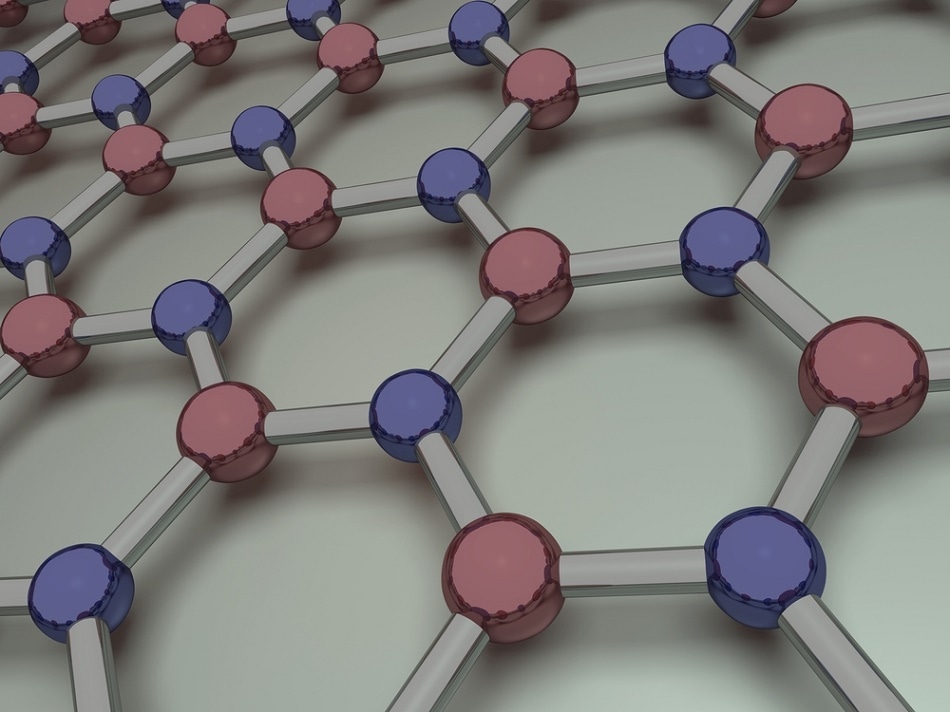Aug 17 2016
 Image Credit: ogwen/Shutterstock.com
Image Credit: ogwen/Shutterstock.com
Researchers from Texas Tech University have shown that hexagonal boron nitride semiconductors are a cost-effective alternative for examining overseas cargo containers entering ports in the U.S.
A complex issue the U.S. is currently facing is preventing nuclear weapons being smuggled by terrorists into the ports. According to the U.S. Security and Accountability for Every Port Act, all overseas cargo containers must be scanned for possible weapons or nuclear materials. This will help end the smuggling of nuclear weapons.
The identification of neutron signals is an efficient technique used to spot specific nuclear materials and nuclear weapons. This is performed by using helium-3 gas within detectors positioned at the ports.
The issue is that helium-3 gas is quite rare on Earth, even though it works well to detect neutron signals. The growing demand for helium-3 gas detectors has almost exhausted the supply, most of which was produced during the nuclear weapon production period over the past 50 years.
Production of helium-3 gas is a difficult task and the scarcity of the gas has resulted in a rapid increase of its cost - making it impossible to deploy sufficient neutron detectors to be able to scan every single incoming overseas cargo container.
Helium-4 is a much more abundant variety of helium gas, and is less expensive, but it cannot be used for neutron detection as it does not interact with neutrons.
A team of Texas Tech University researchers, headed by Professors Hongxing Jiang and Jingyu Lin presented a report in the recent issue of Applied Physics Letters, from AIP Publishing.
This report outlines an alternative material for neutron detection that the team has produced. The alternative material known as hexagonal boron nitride semiconductors meets the vital requirements for helium gas detector replacements and is also capable of acting as a low-cost alternative in the years to come.
The team’s concept was initially proposed to the Department of Homeland Security’s Domestic Nuclear Detection Office and funding was obtained six years ago from its Academic Research Initiative program.
The researchers used a 43-micron-thick hexagonal boron-10 enriched nitride layer to produce a thermal neutron detector with detection efficiency amounting to 51.4%, which indeed is a record high for semiconductor thermal neutron detectors.
Higher detection efficiency is anticipated by further increasing the material thickness and improving materials quality. Our approach of using hexagonal boron nitride semiconductors for neutron detection centers on the fact that its boron-10 isotope has a very large interaction probability with thermal neutrons. This makes it possible to create high-efficiency neutron detectors with relatively thin hexagonal boron nitride layers. And the very large energy bandgap of this semiconductor -- 6.5eV -- gives these detectors inherently low leakage current densities.
Professor Hongxing Jiang, Texas Tech University
One vital aspect of this research is that the newly developed technology and material offer a number of advantages.
“Compared to helium gas detectors, boron nitride technology improves the performance of neutron detectors in terms of efficiency, sensitivity, ruggedness, versatile form factor, compactness, lightweight, no pressurization … and it’s inexpensive,” Jiang said.
This points out that the material is capable of revolutionizing neutron detector technologies.
Beyond special nuclear materials and weapons detection, solid-state neutron detectors also have medical, health, military, environment, and industrial applications. The material also has applications in deep ultraviolet photonics and two-dimensional heterostructures. With the successful demonstration of high-efficiency neutron detectors, we expect it to perform well for other future applications.
Professor Hongxing Jiang, Texas Tech University
The key innovation behind this new neutron detector was producing hexagonal boron nitride comprising epitaxial layers of ideal thickness, which earlier did not exist.
“It took our group six years to find ways to produce this new material with a sufficient thickness and crystalline quality for neutron detection,” Jiang noted.
From the very beginning, the researchers were aware of the difficulty in developing a material with greater crystalline quality based on their early experience of working with III-nitride wide bandgap semiconductors.
“It’s surprising to us that the detector performs so well, despite the fact that there’s still a little room for improvement in terms of material quality,” he said.
One of the most vital impacts of the team’s work is that “this new material and its potential should begin to be recognized by the semiconductor materials and radiation detection communities,” Jiang added.
The team has solved the issue of developing hexagonal boron nitride with appropriate thickness and crystalline quality in order to demonstrate neutron detectors with high efficiency. Next, the researchers plan to exhibit the high-sensitivity of large-size detectors.
“These devices must be capable of detecting nuclear weapons from distances tens of meters away, which requires large-size detectors,” Jiang added. “There are technical challenges to overcome, but we’re working toward this goal.”